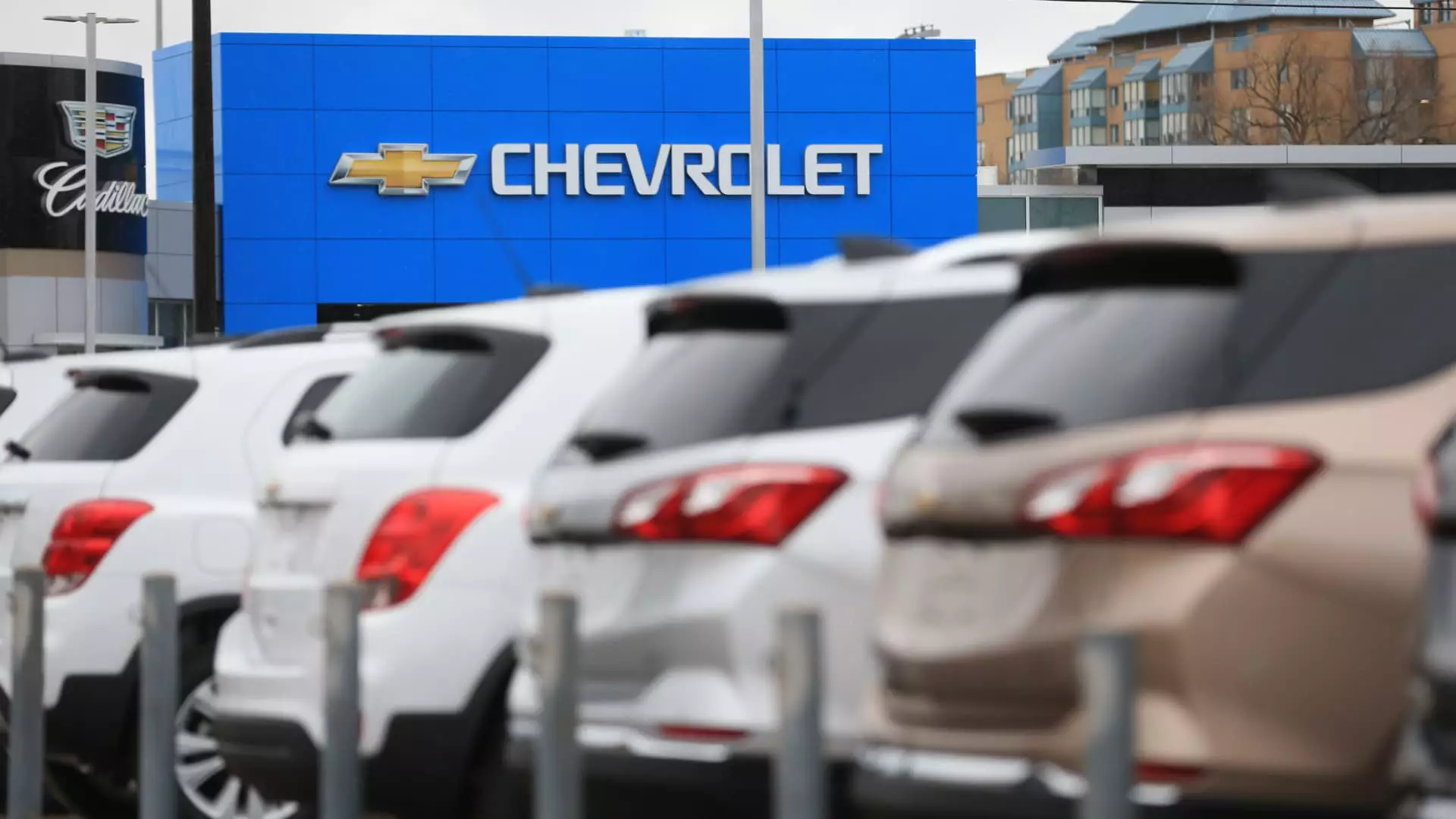The first quarter of this year has painted a startling picture for the American automotive industry. On one hand, we see General Motors (GM) announcing an impressive 16.7% uptick in vehicle sales compared to the first quarter of 2024. This leap was primarily driven by electric vehicles, specifically the Cadillac Escalade IQ and Cadillac Optiq, along with a spike in entry-level crossovers and full-size SUVs. Yet, beneath this success lies a brewing storm: tariffs imposed by President Donald Trump that threaten to ripple through the industry. The question arises: what does this juxtaposition of growth and impending economic penalization reveal about the auto sector’s resilience and its consumers’ motivations?
Interestingly, GM’s performance outstrips initial forecasts, which predicted a mere 1% growth. The enhancing landscape is also echoed by South Korean car manufacturers Hyundai and Kia, who have recorded increases of around 10% and 11% respectively. Meanwhile, Honda Motors and Toyota saw more modest gains of 5.3% and approximately 1% respectively. Ford, notably, has lost its competitive edge with a 1.3% decline—significantly worsened by its strategic decision to discontinue the Ford Edge SUV. Clearly, GM and its competitors are navigating treacherous waters, but could this success be a fleeting mirage?
The Shadow of Tariffs
The anticipated tariffs—set to slap a hefty 25% levy on imported vehicles—are expected to come into effect imminently. Trump’s administration is confident these measures will augur well for the U.S. economy, projecting over $100 billion in annual revenue. However, this perspective is dangerously narrow, ignoring the potential repercussions for consumers and manufacturers alike. Already, car prices inch closer to the astronomical average of $48,000, and the elasticity of demand in the auto market could be severely tested by these inflated costs.
A recent forecast by J.D. Power indicates that consumers are rushing into dealerships, motivated by fears that the impending tariff hike will inflate prices further. A remarkable 13% year-over-year increase in retail sales underscores this point. It raises an important consideration: are buyers acting irrationally out of panic rather than genuine need? If fears are unfounded, we might see a significant slump once the dust settles and the tariffs become reality, illuminating a stark vulnerability in consumer behavior.
A Mixed Bag of Decisions
Leading automakers like Hyundai and Ford report that while overall sales for Ford dipped, their retail operations are thriving amid speculation of price hikes. Ford’s retail sales surged 5% year-over-year, even with a total sales decline. The dynamics are clearly shifting, presenting both gains and losses. FIFA is aiming to reassure their customer base: “We are evaluating the price scenario, but as of now, it’s still a great time to buy.”
Such statements make one wonder how fragile consumer sentiment is in this climate. The complexity of aligning production with shifting tariffs reveals deeper issues at play, where companies must constantly evaluate not only their profitability but also public perception. Hyundai recently committed $21 billion to bolster U.S. manufacturing capabilities, including a major steel plant in Louisiana, but how sustainable is this approach when so much depends on the continued unpredictability of tariffs?
American Manufacturing: A Double-Edged Sword
There’s something to be said about U.S. manufacturing shoring up the industry against international market fluctuations. With approximately 40% of its Hyundai and Genesis vehicles produced in the U.S., and a new plant ramping up production in Georgia, Hyundai is making strategic decisions that ideally bolster its local economy. However, does this insular approach come at an ecological or ethical cost? It’s a constant tug-of-war between safeguarding industries and sustainable practices, highlighting the often conflicting interests of corporate America.
What’s more alarming is how such corporate machinations can risk alienating traditional car buyers and fostering a sense of economic disenfranchisement among blue-collar workers. For every investment in onshoring, one must consider the Laplace’s Demon of potential job losses induced elsewhere due to rising costs passed onto consumers. The middle class, often the backbone of vehicle sales, is already under strain.
The Broader Implications
The intersection of auto tariffs and automotive performance underscores the broader implications of protectionist policies. While GM and its rivals might be enjoying a temporary surge in sales, one must question the long-term sustainability of these gains. The forecasted returns from tariffs are alluring, but they obscure a precarious reality — that high consumer prices could eventually smack right back against these companies’ bottom lines.
In this ever-shifting landscape where political forces dictate market dynamics, the American consumer’s fate rests precariously between frightened anticipation and economic practicality. Whether this rush to buy vehicles will stave off the negative impacts of impending tariffs, or whether it will collapse into an ocean of debt and disillusionment, remains to be seen. The narrative unfolding in the auto industry mirrors our larger societal challenges, offering a critical reminder: in today’s economy, what goes up can come crashing down in an instant.

